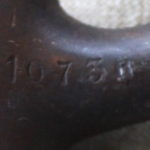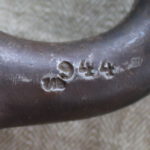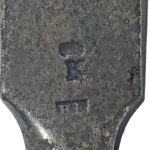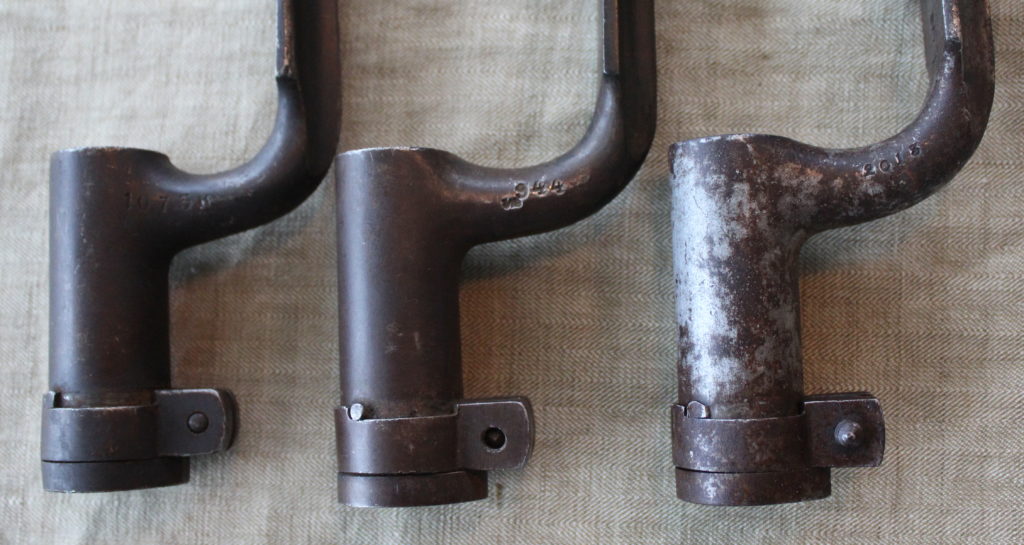
Socket Bayonet for Chamber loader (18 lødig) M/1846, M/1849, M/1855 and M/1867 Navy
The 18 lødige chamber loader rifles M/1846, M/1849 and M/1855 got used for several years and were often modified. An unknown number of these rifles were changed to be used with cartridges (Landmark), now designated M/1867 ( Navy).
The M/1846, M/1849 og M/1855 bayonets are all similar. The only way to see the difference between them, is to check the numbering and markings.
After the the M/1867 rifles was changed, the rifles still used the original M/1846, M/1849 and M/1855 bayonets. Hence it is only possible to identify the 18 lødige M/1867 socket bayonet by looking at marking and numbering. There is uncertain if there was produced new socket bayonets for the modified M/1867 rifle.
The bayonet was produced by Kongsberg Våpenfabrikk in Norway, A. Francotte in Liége Belgium and Crause in Hertzberg, Germany.
By looking at stamps on the arm and blade, it is possible to identify the producer of the bayonet.
| Hertzberg | Liége | Kongsberg |
|---|---|---|
 |  |  |
| The neck and the blade is often marked with a R | Crowned S on the neck (here laying). | The Blade is marked with a Crowned K |
The production numbers in the table below comes from the kvf.no site and the very good book on socket bayonets: Aarum and Sægrov, Døllebajonetten i norsk bruk.
| Modell | Produsent | Våpen | Antall | Serienr |
|---|---|---|---|---|
| M/1846 | Kongsberg Våpenfabrikk | M/1846 | ca 2700 | 1-2882 |
| Liége, Belgia | M/1846 | 1500 | 1-1500 | |
| Hertzberg, Tyskland | M/1846 | 1500 | 1-1500 | |
| M/1849 | Kongsberg Våpenfabrikk | M/1849 | 6000 | 1-6673 |
| Liége, Belgia | M/1849 | 2000 | 1-2000 | |
| Hertzberg, Tyskland | M/1849 | 2000 | 1-2000 | |
| M/1855 | Kongsberg Våpenfabrikk | M/1855 | 3700 | 6710-10593 |
| M/1867 Marine | Kongsberg Våpenfabrikk | M/1867 (18 lødig) omgjort til Landmark | Ukjent | Ukjent |
Measurements (length in mm):
| Length | Length blade | Length socket | Diameter | Weigth |
|---|---|---|---|---|
| ca 575 | ca 490 | ca 72 | ca 23 |
In the beginning the scabbard came with a metal stud, used to secure it to the frog. In 1860 it was decided to replace the stud with a leather strap. The old scabbards, who got converted, can be identified by a filled hole where the stud used to be.


